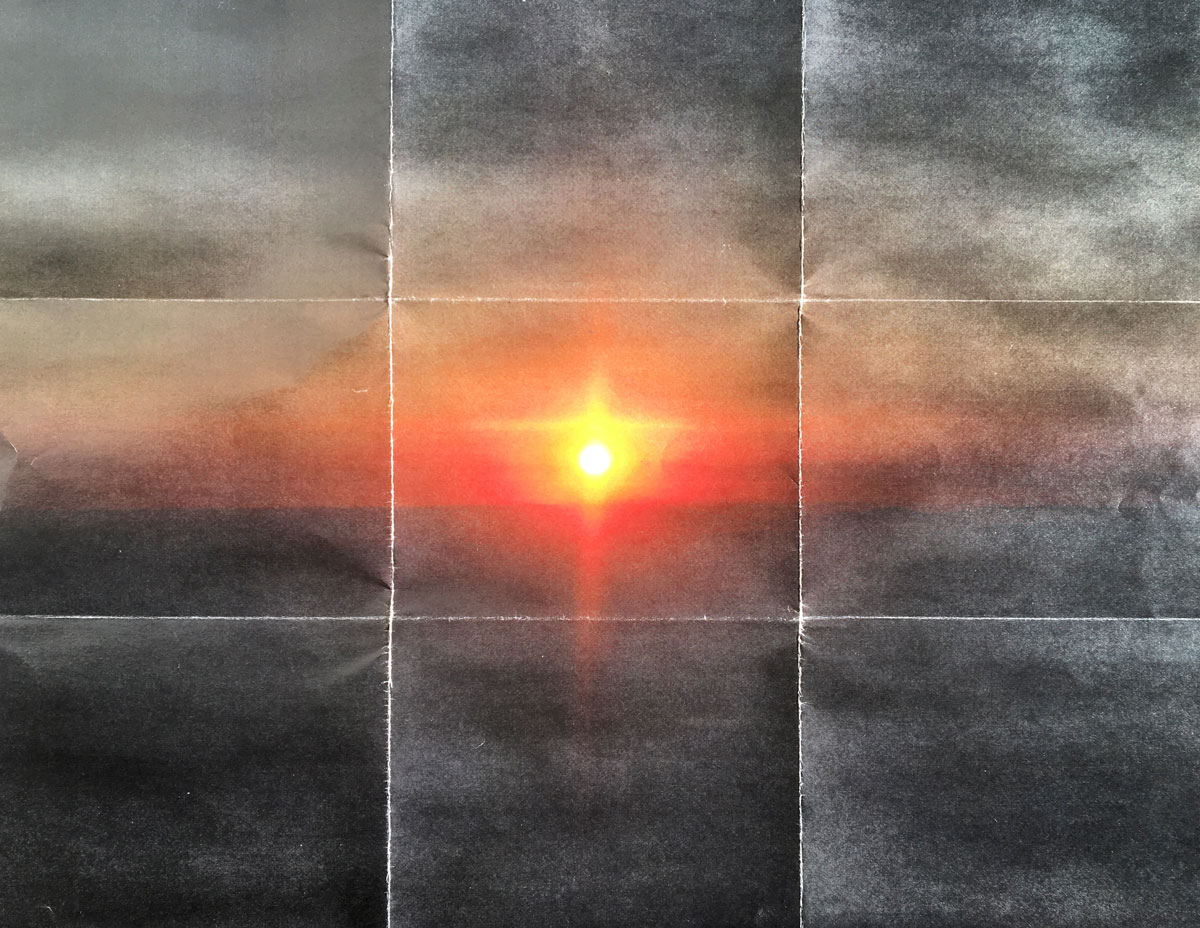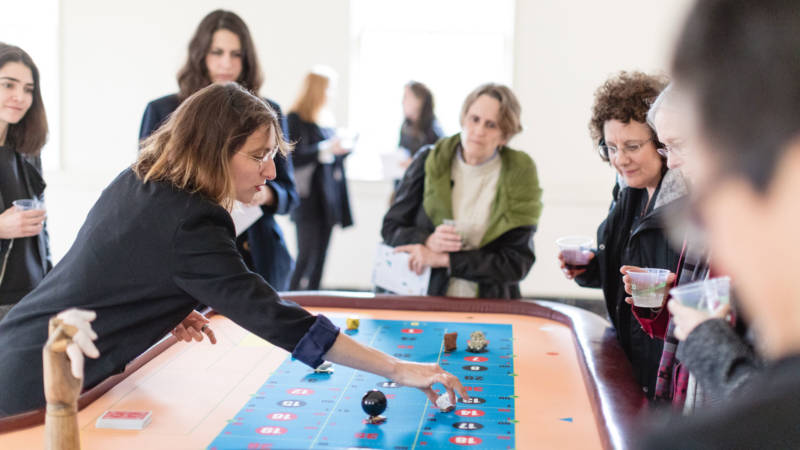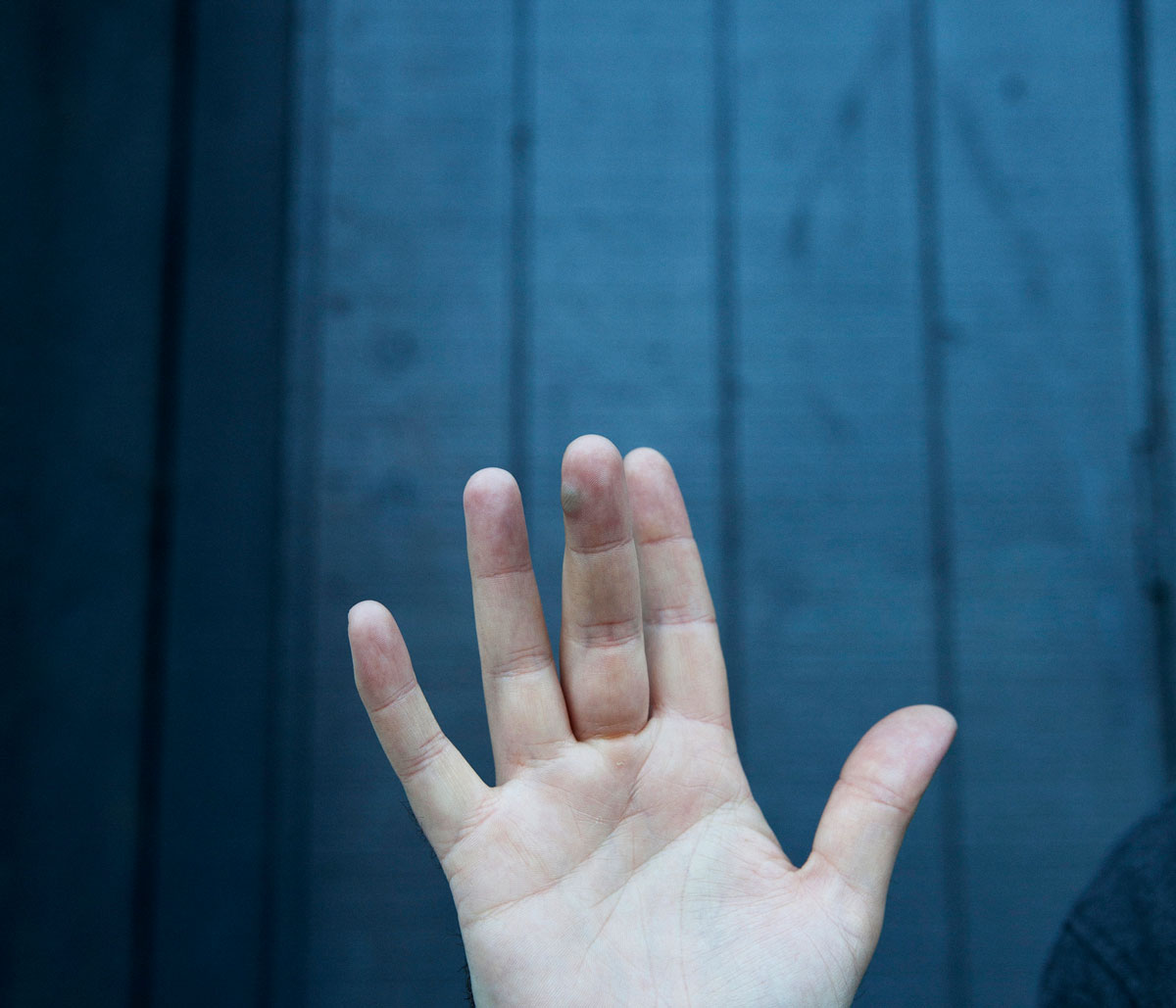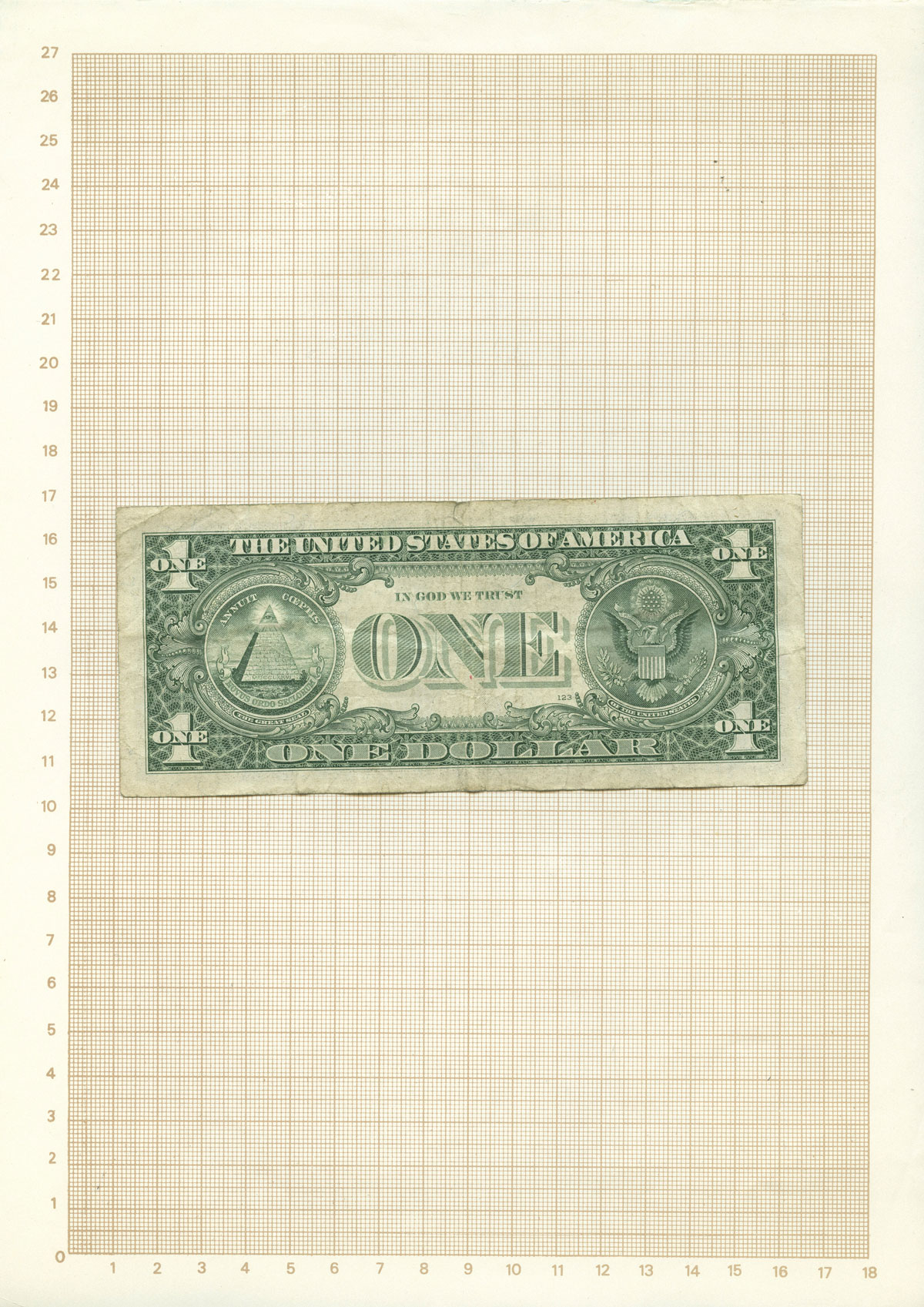“It looks like a game and a table, but in fact it’s a book,” explains artist Stéphanie Solinas about her upcoming exhibition Becoming Oneself at the Headlands Center for the Arts in Marin. I met the artist in her studio at the Headlands, which is open to the public while she prepares for the show, but she was reluctant to divulge the story arc of this book. As books go, the work is akin to a Choose Your Own Adventure, and she hardly had the time to recount every possible version of the text.
Continuing with the literary metaphor, Becoming Oneself, which will be unveiled on April 14 during the Headlands’ Spring Open House, is perhaps most accurately described as a philosophical travelogue of the French artist’s time in the western United States.
There is a long tradition of French intellectuals traversing the U.S. in an attempt to understand what exactly is going on across the Atlantic. Alexis de Tocqueville’s Democracy in America (1835-40) is the classic text of this genre. Postmodern philosopher Jean Baudrillard followed suit in 1980s, as did philosopher Bernard-Henri Lévy at the turn of the current century. Solinas’ Becoming Oneself follows suit, but with an eye towards the metaphysical.

Since 2014, Solinas has been investigating none other than the dualism that undergirds modern European thought, specifically how the often-conflicting notions of mind and body shape individuals’ identities. At the same time that we are made of body, Solinas says, “we are made of our spirituality; we are made of our deceased friends and our ancestors.”
How then, she asks, can this complexity be represented in images? Indirectly and poetically, her work answers.





